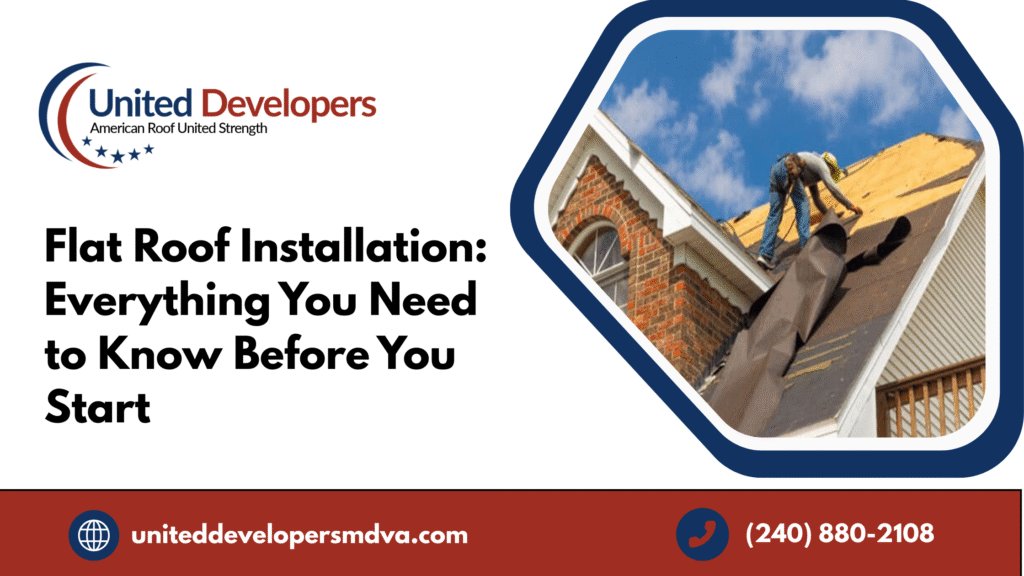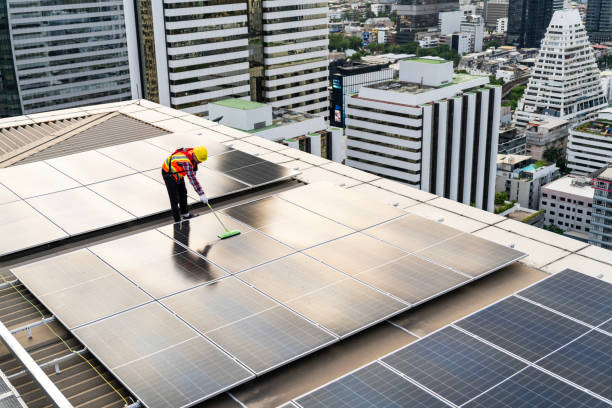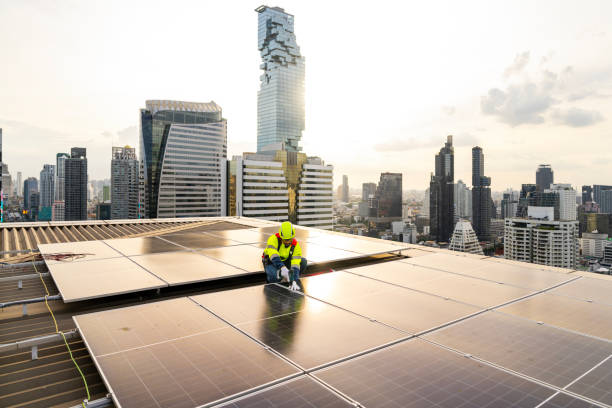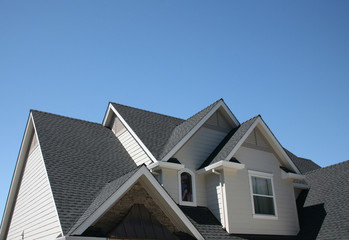Installing a flat roof is one of the most popular choices for both residential and commercial buildings. It offers a modern look, easy maintenance, and cost-effectiveness compared to traditional roofing. However, before starting a flat roof installation, it’s important to understand the process, materials, costs, and potential challenges.
In this blog, we’ll cover everything you need to know about flat roof installation—from choosing the right materials to understanding repair and replacement options. We’ll also compare different flat roofing types, explore their benefits, and provide practical tips to help you make the best decision for your property.

Table of Contents
What is a Flat Roof?
A flat roof is a type of roofing design where the surface is almost level compared to sloped or pitched roofs. While not completely flat, these roofs have a slight slope to allow water drainage.
- Flat roofing is widely used in commercial buildings, warehouses, and modern homes.
- It provides extra usable space for AC units, solar panels, and rooftop gardens.
- Many homeowners now choose flat roof installation for its clean, stylish, and modern appearance.
Advantages of Flat Roofing
Flat roofing comes with a wide range of benefits that make it one of the most popular choices for both homeowners and businesses. Unlike traditional sloped roofs, flat roofs are practical, versatile, and easy to manage. Below are the major advantages explained in detail:
1. Modern and Stylish Design
Flat roofs give buildings a sleek, modern look. They match well with contemporary architecture and add a unique appearance compared to standard pitched roofs. Many homeowners prefer flat roofing because it makes their property stand out and appear more attractive.
2. Extra Usable Space
One of the biggest advantages of flat roofing is the additional usable space it provides. Instead of wasted sloping areas, you can make use of your roof for:
- Rooftop gardens or small green spaces
- Installing solar panels for energy savings
- Outdoor sitting areas or terraces
- Storing AC units and other utilities
This makes flat roof installation a smart choice for both comfort and functionality.
3. Easy Accessibility
Flat roofs are much safer and easier to walk on compared to steep roofs. This makes regular inspection, cleaning, and maintenance much simpler. Homeowners can also easily check for small issues themselves without waiting for a contractor.
4. Low Maintenance Needs
When installed correctly with quality materials, flat roofs require less frequent repairs. Modern flat roofing systems are designed to handle tough weather conditions, and regular cleaning is often enough to keep them in good condition.
5. Durability and Longevity
Flat roofing materials like EPDM, TPO, and PVC are highly durable. With proper installation and care, they can last for decades. These materials are also resistant to UV rays, fire, and strong winds.
6. Cost-Effectiveness
Flat roofs generally require fewer materials and less labor compared to complex pitched roofs. While exact costs depend on the material, the overall installation is usually more affordable. Additionally, the energy efficiency of flat roofing can help reduce long-term energy bills.
7. Energy Efficiency
Many modern flat roof materials reflect sunlight instead of absorbing it, keeping your home or office cooler in the summer. This reduces the need for air conditioning and contributes to energy savings.
8. Versatility in Design
Flat roofing works well for both residential and commercial buildings. It is flexible in design, allowing owners to add skylights, green roofing, or even convert the area into a recreational space.
9. Eco-Friendly Options
Flat roofs are ideal for eco-friendly upgrades. Homeowners can install green roofs that support plants, reduce heat, and improve air quality. They also support solar panels, making them an environmentally responsible choice.
10. Increased Property Value
A well-installed flat roof not only protects your home but also boosts its resale value. Potential buyers often see the extra roof space, modern look, and durability as major benefits, making your property more appealing in the market.


Flat Roof Installation Process (Step by Step)
Step 1: Preparing the Surface
Before installation begins, the old roofing material (if any) is removed. The surface must be cleaned, leveled, and inspected for damage.
Step 2: Choosing the Material
Different flat roofing materials are available. Each has its own strengths in terms of durability and maintenance.
Step 3: Installation
The roofing material is carefully laid, sealed, and reinforced. Proper sealing ensures water resistance.
Step 4: Waterproofing and Finishing
A final waterproof layer is applied. This protects the roof from leaks, standing water, and weather damage.
Best Materials for Flat Roof Installation
Flat roofing materials play a big role in performance and lifespan. Below are the most common options:
1. EPDM Rubber Roofing
- Flexible and durable
- Lifespan: 20–30 years
- Resistant to UV rays and weather
- Low maintenance
2. TPO Roofing
- Lightweight and eco-friendly
- Reflects sunlight, reducing heat
- Lifespan: 20–25 years
- Easy to maintain
3. PVC Roofing
- Very strong and resistant
- Handles heavy loads well
- Lifespan: 25–30 years
- Great for commercial use
4. Modified Bitumen
- Multi-layered asphalt system
- Good weather resistance
- Lifespan: 15–20 years
- Requires medium maintenance
5. Built-Up Roofing (BUR)
- Traditional flat roofing system
- Uses multiple layers of tar and gravel
- Lifespan: 15–25 years
- Heavy and requires more maintenance
Material Comparison Table
| Flat Roofing Material | Durability | Lifespan | Maintenance Level | Best For |
|---|---|---|---|---|
| EPDM Rubber | High | 20–30 years | Low | Homes & offices |
| TPO Roofing | High | 20–25 years | Low | Energy-efficient buildings |
| PVC Roofing | Very High | 25–30 years | Low | Commercial use |
| Modified Bitumen | Medium | 15–20 years | Medium | Homes & small businesses |
| Built-Up Roofing (BUR) | High | 15–25 years | High | Large buildings |
Flat Roof Repair and Maintenance
Even with strong materials, flat roofing can face issues if not maintained.
Common Problems:
- Leaks from cracks or poor sealing
- Pooling water due to blocked drainage
- Blistering or cracks from heat or aging
Maintenance Tips:
- Inspect your roof twice a year
- Clear drains and gutters regularly
- Fix small cracks early before they spread
- Reapply waterproof coatings when needed
Flat Roof Replacement vs. Repair
Sometimes, flat roof repair may not be enough. Here are signs you may need replacement:
- Repeated leaks in different areas
- Roof age exceeding its lifespan
- Structural damage
- High maintenance costs
Replacing with modern materials gives better durability, energy savings, and peace of mind.
Benefits of Flat Roof Installation
Flat roofing offers many long-term benefits:
- Energy Efficiency: Reflective materials reduce heat.
- Extra Space: Usable for solar panels, gardens, or patios.
- Modern Look: Enhances property value.
- Low Cost of Maintenance: Fewer repairs when installed correctly.
Flat Roof Design Ideas
Flat roofs are not just functional—they can also be creative:
- Rooftop gardens for a natural space
- Green roofs for eco-friendly living
- Solar-ready installations
- Outdoor living spaces or rooftop decks
Choosing the Right Flat Roof Contractor
A good installation depends on hiring the right contractor. Consider:
- Experience with flat roofing
- Reviews and recommendations
- Warranty offered on materials and labor
- Use of quality materials
Frequently Asked Questions
1. How long does a flat roof last?
A flat roof can last 20–30 years with proper installation and regular maintenance.
2. Which materials are best for flat roof installation?
Yes, flat roofs need regular inspections to prevent water pooling and to keep drains clear.
3. Can I install a flat roof myself?
DIY installation is risky. It’s best to hire a professional to ensure durability and waterproofing.
4. Are flat roofs good for all climates?
Flat roofs work well in most climates but require extra care in heavy rainfall or snowy regions.
Conclusion:
Flat roof installation is a smart choice for homeowners and businesses looking for a durable, stylish, and practical roofing solution. With benefits such as extra usable space, easy maintenance, and modern design, flat roofing is a long-term investment that pays off in both function and appearance.
By choosing the right material, ensuring proper installation, and following regular maintenance, your flat roof can provide reliable protection for many years.


